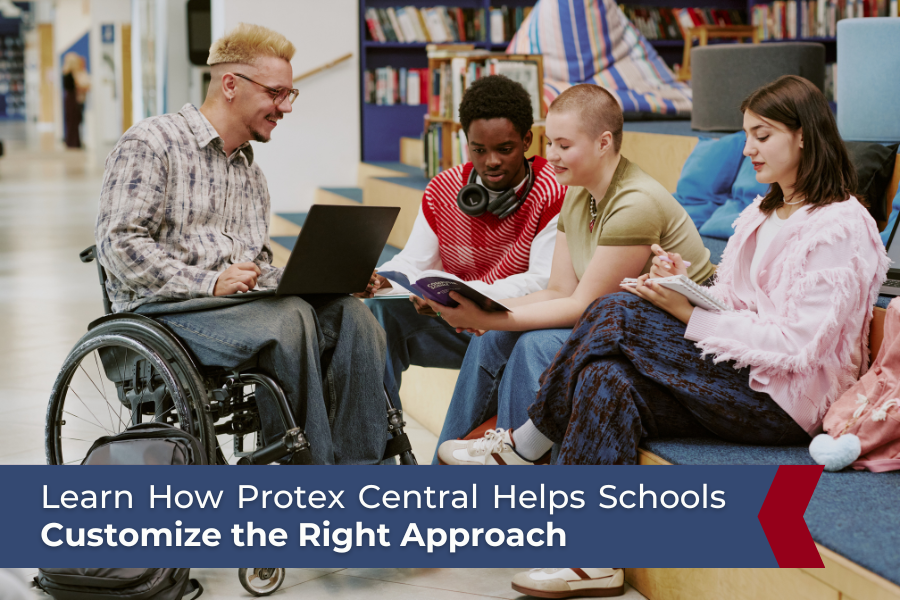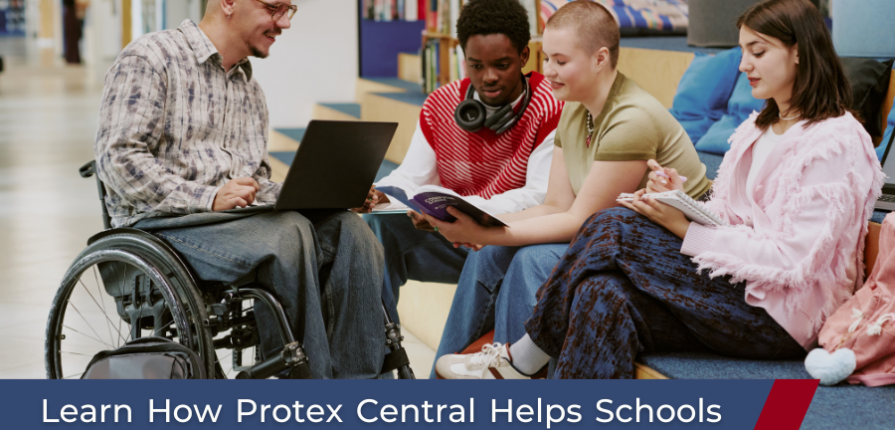
As a fire and security system integrator in Nebraska and Iowa, we believe that every student deserves to feel safe at school. For learners with physical disabilities, sensory processing differences, or communication challenges, standard fire and security systems may not provide the protection or the peace of mind they need. Customizing these systems isn’t just about compliance; it’s about equity, dignity, and making sure every child can thrive.
Visual Alarms: Seeing Safety Clearly
Traditional fire alarms rely heavily on sound, but for students who are deaf, hard of hearing, or have auditory processing challenges, visual cues are essential. Visual alarms should be strategically placed throughout classrooms, corridors, restrooms, and common areas. The goal is to make them visible from any vantage point, including seated positions or from a wheelchair.
Brightness and flash patterns matter. For students with sensory sensitivities, overly bright or rapidly flashing strobes can cause distress or even trigger migraines or seizures. Adjustable visual alarms, or those with softer, slower flash rates, can provide effective warning without overwhelming sensitive students. In some cases, colored lights or visual timers can supplement traditional strobes, offering a less jarring but equally clear signal.
Low-Frequency Sounders: Hearing Without Overload
Standard fire alarm horns and bells can be painfully loud or startling for many children, but especially for those with autism or sensory processing disorders. Low-frequency sounders, which emit tones at 520 Hz, may be more easily detected by people with hearing loss and less likely to cause panic or pain for those with sound sensitivities.
Some systems can be programmed with escalating volume, allowing students and staff time to prepare before the alarm reaches its maximum. Others can be paired with voice instructions, providing clear, calm directions rather than just a blaring siren. This approach can reduce confusion and help students with cognitive or communication challenges understand what’s happening.
Accessible Pull Stations: Designed for Every Ability
In an emergency, every second counts. Pull stations must be accessible to all students and staff, regardless of mobility. This means installing devices at ADA-compliant heights-typically between 34 and 48 inches from the floor-and ensuring clear, unobstructed paths for wheelchair users.
Placement matters. Pull stations should be located near exits and along accessible routes, but not in places where they’re likely to be blocked by furniture or crowds. Tactile signage, large handles, and clear visual indicators make it easier for students with limited dexterity or vision to activate an alarm if needed.
Evacuation Routes: Planning for Mobility and Sensory Needs
Evacuation planning must account for students who use wheelchairs, walkers, or other mobility devices. Routes should be wide, free of obstructions, and include ramps or elevators where necessary. Areas of refuge-safe spaces where students can wait for assistance if they can’t use stairs – must be clearly marked and equipped with two-way communication to alert first responders.
For students with sensory sensitivities, evacuation can be overwhelming. Consider designating quiet zones or alternate routes that avoid the busiest hallways. Staff can use visual timers, picture schedules, or social stories to prepare students for what to expect during a drill or real emergency. Practicing with these supports in place helps build confidence and reduces anxiety.
Integrating with IEPs and Staff Training
No two students are alike. Individualized Education Programs (IEPs) often include specific accommodations for emergency situations. Fire and security planning should be coordinated with special education teams to ensure these needs are addressed. This might mean assigning a staff “buddy” to assist during evacuations, providing noise-canceling headphones, or developing personalized evacuation plans.
Staff training is crucial. Every adult on campus should know how to support students with disabilities during a drill or emergency. This includes understanding how to communicate instructions, assist with mobility devices, and recognize signs of sensory overload or distress. Regular practice, clear protocols, and open communication between security teams and educators create a culture of safety and inclusion.
Technology and Integration: Building a Safer Campus
Modern fire and security systems offer advanced integration options. Centralized control panels allow for real-time monitoring and rapid response. Visual alarms, low-frequency sounders, and accessible pull stations can be connected to a single interface, streamlining maintenance and ensuring every device is ready when needed.
Schools can also integrate these systems with mass notification tools, sending alerts to staff devices, classroom screens, or even student tablets. This layered approach ensures that no matter where a student is or what their needs may be, they receive clear, accessible information in an emergency.
A Commitment to Every Student
Customizing fire and security systems for accessibility and sensory sensitivity is more than a technical challenge-it’s a commitment to equity and safety for all. By investing in inclusive design, thoughtful planning, and ongoing staff training, schools can create environments where every student feels protected, empowered, and valued.
Fire and Security System Company in Nebraska and Iowa
Ready to make your campus safer for every student? Protex Central specializes in designing, installing, and maintaining accessible, sensory-friendly fire and security systems for schools. Let’s work together to build an inclusive safety plan that meets your students’ unique needs. Contact us at (800) 274-0888 for a free consultation and expert support because every student deserves to feel safe.



Leave a Reply
You must be logged in to post a comment.